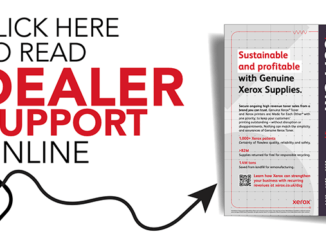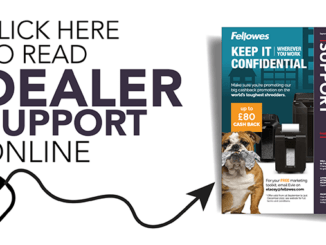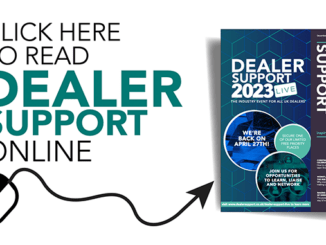
With lockdown lifting a little and the transition period looming ever-nearer, Brexit is certainly back on the agenda. BOSS is delving into the new immigration rules and the new border operating model, as well as the latest news from London and Brussels
Remember, you can add colleagues to BOSS’ mailing list by logging into the members’ area of the BOSS website or contacting liz@bossfederation.co.uk
Here in the UK…
As the July ends, and August holidays beckon, the government is going full steam ahead with a new post-COVID, pre-real-Brexit information campaign. The multi-million ‘The UK’s New Start: Let’s Get Going’ advertising began on 13 July via TV, radio, online and text message.
It’s hoped the campaign will encourage both businesses and individuals to prepare for the end of the Transition Period on December 31, with the ‘Check, Change, Go’ strapline directing people to the online checker tool.
It’s thought there will also be a ‘field force team’ for one-to-one support for businesses over the phone. Details are currently thin on the ground regarding how to access this, but we’ll keep you posted.
Also in the news, a report for the Tony Blair Institute published on the 16 July recommends Boris Johnson delay the completion of Brexit by 12 months to avoid ‘a disastrous no-deal’. The report suggests that the level playing field issue around state aid can be resolved by the UK maintaining an effective domestic anti-subsidy regime, based on a set of ‘common objectives’ agreed with the EU. But…
Over in Brussels…
Reports from Brussels are that talks are still frustrating and difficult, with two key issues – fishing rights and state subsidies – remaining unresolved. Last week, Michel Barnier, the EU’s Chief Negotiator, warned that “time for answers is running out.”
At an internal briefing on Friday 24, Barnier reportedly said the UK had scaled back some of its aspirations and was now seeking what constituted a “low-quality, low-profile” agreement, but one that would still provide tariff-and-quota-free access to the EU market. The EU remains staunch that it will not allow the UK this level of access unless it signs up to ‘level playing field’ principles that minimise the risk of Britain undercutting the EU on environmental regulation, workers’ rights and state aid to business.
Fishing is the other sticking point, and remains highly sensitive. The EU wants to continue the status quo on access to British fishing waters, and the UK wants higher quotas for its own fishing boats. To make any deal on fishing it seems the EU will have to concede some quotas to Britain; under consideration is a phased plan that would give EU fishing some medium term certainty. Some of the inland state support such a compromise, but any such arrangements continue to be protested by France.
New immigration system
Mid-month saw the release of new information from the Home Office about the planned points based system. The new system comes into effect on 1 January 2021 when free movement with the EU ends.
There are five key new pieces of information in the publication.
- The government intends to relax the rules around ‘switching’ – this will enable visa holders to switch between visa types whilst in the UK.
- Firms will continue to be able to complete right-to-work checks digitally and applicants will be able to access their immigration status information via an online service – a helpful modernisation of the process
- The government has confirmed that it intends to expand the Tier 5 Youth Mobility Scheme (YMS). The YMS provides a route for young people (18-30) to come and work in the UK for up to two years. YMS agreements are bilateral so depend on the outcome of negotiations with other countries. The UK already has YMS agreements with Australia, Canada, Japan, Monaco, New Zealand, Hong Kong, Republic of Korea and Taiwan
- The government has also announced the reintroduction of the post-study work visa for international graduates. This enables graduates to remain in the UK for two years after the end of their course, or three years if they completed a PhD
- The Tier 2 Intra-Company Transfer visa route will be retained and the cooling-off period will be simplified.
For more details please click the button below.
NEW IMMIGRATION SYSTEM
EU settlement scheme update
For those EU citizens already living and working in the UK, the settlement scheme remains open for just under a year. More than 3.6 million applications have been made and over 3.3 million people have been granted status.
The latest detailed official statistics show that the highest number of applications have so far come from Polish (697,900), Romanian (590,100) and Italian (363,600) nationals with more than 3.2 million applications coming from EEA citizens living in England, 180,700 from Scotland, 59,400 from Wales and 59,700 from Northern Ireland.
Any EU staff not yet signed up should be encouraged to do so as soon as possible. There is a government Toolkit, which can be accessed by clicking the button below, which you can use to help communicate with staff.
GOVERNMENT TOOLKIT
Border operating model
More detail on the three-phase border controls was published on the 13 July. For a simple table, please click the button below.
SIMPLE TABLE
Businesses will need to take action, regardless of the outcome of the EU/UK negotiations. Preparations are along the same lines as preparations made in earlier years:
1. Apply for a GB EORI number
Chances are you have one by now, if you move goods into or out of the country. All VAT-registered businesses which trade with the EU should have received an automatic enrolment from HMRC last year, with your EORI number coming in the post, so check whether you have one before applying.
If not, you can apply here for one here. The application process should take under ten minutes and the EORI number will be supplied in around a week.
You must have one if you’re VAT-registered and want to continue to trade with the EU!
2. Get a customs intermediary
Intermediaries can help traders find the information needed to complete formalities and submit the required declarations. This simplifies the declaration processes for traders. Further information can be found here.
For business that want to do their own declarations, and for intermediary businesses themselves, we’ve covered the available funding for training in previous Bulletins and on our website.
If you decide not to use an intermediary, you will need to make declarations yourself. To do this you will need to get access to HMRC systems and to purchase software.
3. Apply for a duty deferment account
Traders who import goods regularly may benefit from having a duty deferment account (DDA). This enables customs charges including customs duty, excise duty, and import VAT to be paid once a month through Direct Debit instead of being paid on individual consignments. VAT registered traders can instead account for import VAT on their VAT return using postponed VAT accounting, as detailed below.
To set up a DDA, traders, or their representatives, apply for a deferment account number (DAN) and will need to be authorised by HMRC. New rules are being introduced which will allow most traders to use duty deferment without a Customs Comprehensive Guarantee (CCG).
4. Prepare to pay or account for VAT on imported goods
VAT-registered traders will be able to account for import VAT on their VAT return by using postponed VAT accounting from 1 January 2021. Unless they are eligible to defer their supplementary declarations, they will not be compelled to use postponed VAT accounting.
5. Ensure drivers have correct international driving permits
Hauliers need to ensure their drivers have the correct documentation, for example an international driving permit (IDP) or an additional licence may be required to drive in some countries.
6. Know all about import tariffs
Businesses importing goods into GB should ensure they are familiar with using the Trade with the UK tool which provides detailed information on tariffs, taxes and rules. The tariffs shown are those currently being applied until 1 January 2021. Use the UK Global Tariff tool to check the tariffs that will apply to goods imported from 1 January 2021. Most print-related tariffs are, and will remain, 0%.
7. And duties and customs procedures for exporting
If you export goods from Great Britain you should ensure you are familiar with using the ‘Check How to Export Goods’ tool which provides detailed information on duties and customs procedures for over 160 countries.
Latest publications
You can read the latest Brexit publications by clicking the button below.
LATEST PUBLICATIONS
Don’t forget to follow Dealer Support on Facebook and Twitter!




Be the first to comment